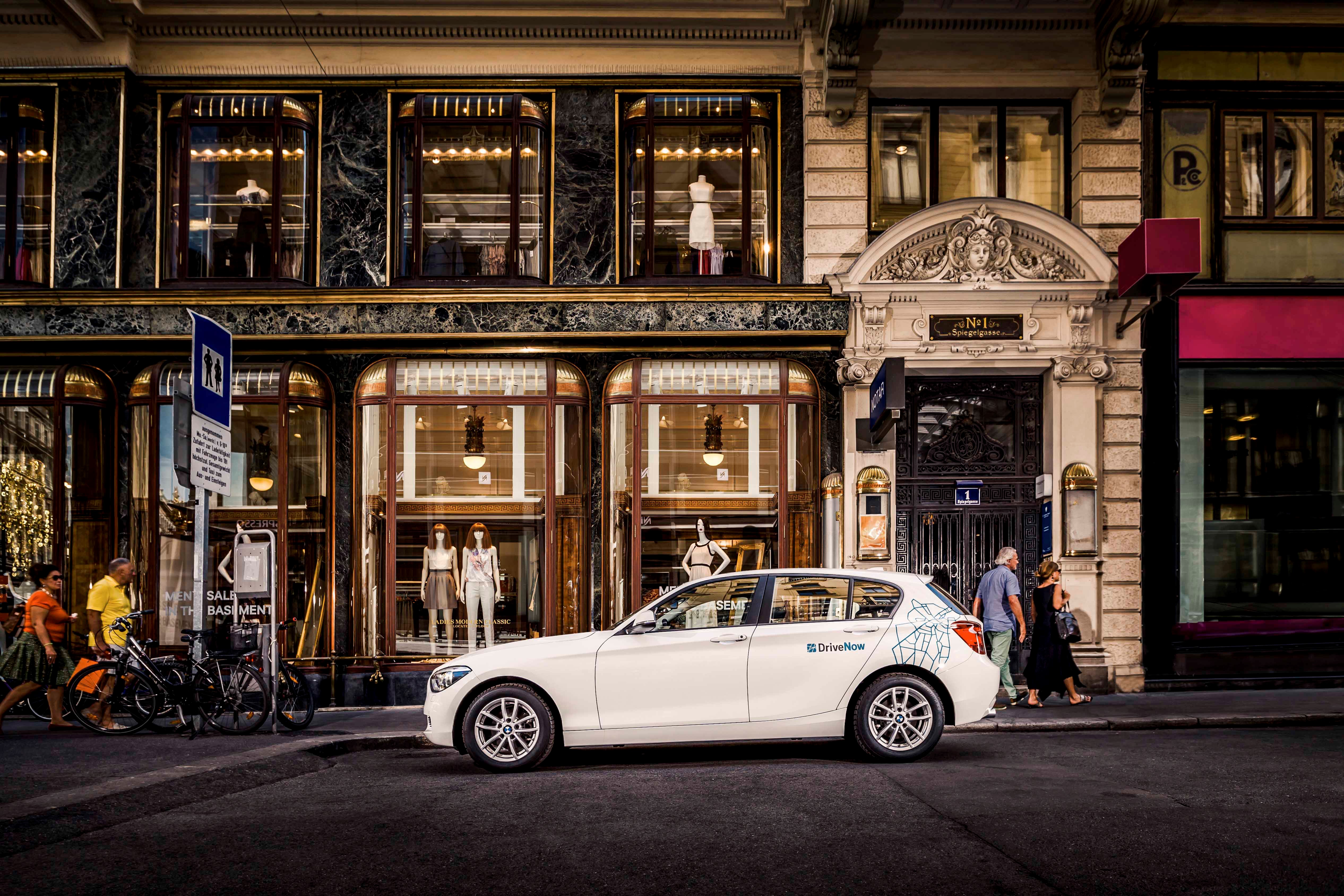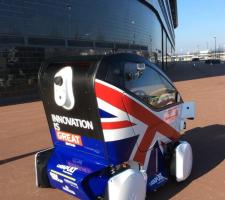
Jon Masters investigates some of the longer term trends that will shape transportation over the next 20 years.
Business analysts and investors have already placed their bets on a future of technological smart mobility services. In December last year, the Wall Street Journal reported that Uber, the on-demand taxi and lift share smartphone app and start-up business, had been valued at $41.2 billion which, as the Journal reported, is an incredible vote of confidence for a company only five years old.
However, the path has not been all smooth for Uber. Its service, which allows people to book and pay for a lift or volunteer as a driver via a smartphone app (in any one of over 100 countries worldwide, the company claims), has faced stiff opposition and even banning orders in some parts. But the company’s expansion and valuation suggest the business community believe the model is a good one.
Competition and regulation may hinder its pace of growth in places, but there appears to be a very strong future for technology-based transport services.
This vision of the future includes connected vehicles and much greater connectivity in general. The smartphone and tablet devices that have released Uber and its competitors onto the transportation world are opening up a lot of new possibilities for all-inclusive mobility.
Private car ownership is already reported to be in decline in big cities, which is where at least three quarters of the world’s population is expected to live in future.
In more rural parts this raises the question why have unprofitable bus services subsidised by local government when authorities, transit agencies or operators can set up or sponsor their own versions of an Uber-like on-demand transport service?
Different functionality
ITS consultants and analysts point to a myriad of mobility services that are already under development.
With more people living in cities and using different ways of travelling there will come a greater need to make better use of existing assets says Cummins, who predicts on-demand transport services, car sharing and use of apps will become more prevalent.
He goes further adding: “With so many urban mobility options, why keep a car? And there’s a lot of talk at present about autonomous vehicles, but by the time they’re being rolled out en-masse it’s likely that there will already be so much automated driver assistance in cars, introduction of self-drive will not appear such a massive change.
“There will be many incremental changes and in cities at least we have to get away from viewing the vehicle as a car when there are so many different possible vehicle options.
Whether they are self-driving or not, in future urban transport will have very different functionality,” Cummins adds.
New models
Further evidence of a shift towards growth in mobility services, as car ownership declines, comes from the fact that vehicle manufacturers are investing a stake in a future with lower car ownerhip.
The
“Creating intelligent solutions for urban mobility is of high strategic relevance for the BMW Group,” says BMW i spokesperson Verena von L’Estocq. “With our service portfolio of DriveNow, ParkNow and ChargeNow, we are addressing new customers, setting up new business models and also generating new earnings. DriveNow reached profitability in Germany in 2014.”
The private sector is clearly starting to realise the viability of personalised mobility services while public sector authorities and agencies are also identifying this potential. Although, unable to take the same risks on development, many government departments are likely to find the task of proving business cases a more difficult and lengthier process.
Smart cities
Milton Keynes Council has embarked upon a $23.7million (£16million) MK Smart project in partnership with a number of technology organisations and a consortia of specialist suppliers (see sidebar, left). One of these is the UK’s Autodrive project, which is developing a fleet of around 40 driverless ‘autopod’ vehicles for use on public roads. “A facsimile of a real service is necessary to develop the business model and we need this many vehicles to prove it will work,” says Snelson.
Milton Keynes is hopeful of a grant from Innovate UK, sponsored by the UK Government, to fund construction of a ‘whole city’ back office ITS architecture, to serve as a common platform for all electronic ticketing. Elsewhere, similar collection and analysis of large quantities of traffic and travel or parking information – the ‘big data’ talked about in context of smart city projects – is already well under way with a number of larger cities worldwide having already built city-wide ITS systems for sharing and managing data across local government departments or agencies.
“At the leading edge the focus is on personal mobility that is smarter and more seamless, from making best possible use of the data that’s available,” says communications and marketing director for Xerox Transportation & Government, Richard Harris.
“Until recent times the tendency was for individual smart ticketing or ITS applications to be developed in isolation, not as a suite of software that worked together. Nothing was automatic or integrated, which is a key thing to achieve to get maximum return from the investment.”
Some cities are now “actually doing this stuff”, Harris says. Examples include the Quebec region where 19 different transport authorities and operators are sharing one common back office ticketing system across Montreal, Quebec, Laval, Longueuil and Sorel-Varennes. Passengers can use a single contactless card holding up to four different tickets to travel throughout the whole region.
“It’s a seamless and easily understood system for users and we’ve maintained the key requirement of keeping all of the operators’ data separate, private and secure,” Harris says.
“From the basis of a common shared platform it’s relatively easy to design a system that suits everyone – all operators and users. Mobility as a personalised service will be available in the near future.”
Big data benefits
If city-wide mobility is making use of ‘big data’ now, the future looks like being awash with masses of information for analysis. As more vehicles become connected in the not too distant future, a new larger network of data will appear which, according to Harris, could be a game-changer.Issues of managing data for assuring privacy and security have been often repeated concerns. “But on the whole, authorities and industry have managed data well, and the rise of pay-as-you-drive services and other apps and software has shown that people are actually quite relaxed about submitting data on their travel habits,” he says.
Inevitably there are questions over who owns information transmitted from connected vehicles, but if companies and authorities become preoccupied with this issue there’s a danger of not unlocking its wider social benefits. “Clearing this issue, by establishing clear and unambiguous protocols on ownership and privacy, is crucial for realising the potential benefits for society as a whole,” Harris adds.
Risk of privacy concerns is already less than once feared and is likely to decrease further, says Jay Hedley, technology consultant and
Accenture has recently been awarded a US$184million contract by the Washington (DC)
The concept is about making journeys easier, more seamless and efficient for passengers – including use of mobile phones for payment via near field communication – and using data from electronic payments to make services better. “This is the present. There is a ramp-up period. It will take about five years for non-paper ticketing to be the norm across Washington DC, but new business models are appearing,” Hedley says.
Free Wi-Fi
He also cites New York’s Link NYC as a case in point. The CityBridge consortium has now begun installing Link NYC, a free-to-use gigabit Wi-Fi network, across five of the city’s boroughs. Installation is costing nothing to New York’s taxpayers, the city claims. Revenue of $500million is expected over 12 years from digital ads displayed on approximately 10,000 antenna consoles on street corners. “The city will be able to use this same network for data transfer and monitoring,” says Hedley.It is estimated that worldwide about 1.3 million people are moving into urban areas every week. According to Hedley, in London the expectation is a need for about $2trillion of transportation investment to keep up with population growth to 2050.
Technology can reduce the need for this capital investment, building intelligence to improve the transport experience and its efficiency.
“In future on-demand driverless cars may make better use of available vehicles and road space. This is the magic of services like Uber, taking the slack out of the system and showing how ITS is intercepting with new business models.”
The only certainty is that as fast as innovative technology and new business models solve existing transportation problems, new ones will arise.
Realising data value
Milton Keynes is a relatively small urban area, of around 260,000 people, but one that is expected to grow to 300,000 by 2026. It is also known for having been designed and laid out as a new town in the late 1960s, largely to suit transport by car.
“Our models are showing traffic gridlock in future if we don’t find new ways of managing transport. There is also significant pressure on spending, meaning a requirement to spend less on both infrastructure and the subsidising of transport services,” says Milton Keynes Council’s director of strategy Geoff Snelson.
“Low density urban development such as ours’ makes public transportation a commercially non-viable alternative to the car. So, we’re developing a strategy around intelligent mobility, characterised by responding to user needs,” Snelson says.
The MK Smart project is still in its infancy. There appears an element of ‘suck it and see’ about some of the technological plans. As well as the driverless autopods, business cases are being looked at for on-demand transportation – ride sharing bus and taxi schemes, says Snelson.
“These are at early stages but we’re designing this sort of service implicitly into what we’re doing, with local taxi firms and a consortium of fleet operators. We want such provision to be inclusive and commercial, so operated by the private sector with us as enablers,” he says.
Additionally, a ‘business innovation environment’ is being created, he adds. SMEs are being encouraged to develop and test transport apps using data that the council is making freely available.
MK Smart is centred on a data hub. Feeds from sensors are building a real-time map of traffic and parking, augmented with models of people movement from the council’s planning department. “The data hub has a layer for commercial transactions. We need to freely allow apps and their developers’ business opportunities to emerge before we can realise the value of the data,” says Snelson
Technology includes all
Personalised transport services enabled via technology could be one answer for more inclusive mobility. Towards the end of 2014, wheelchair user Doug Paulley lost his case in the UK Appeal Court against the bus operator First Group. Paulley had initially sued First Group after one of its buses refused to carry him because space allocated for wheelchair users was being used by a mother and buggy with a sleeping baby inside.
In 2013 a judge ruled that First Group’s ‘first come first served’ policy contravened the UK Equality Act. However in December 2014 the bus operator took the case to the appeal court and won. The appeal judge stated that First Group should not be given legal responsibility for a situation whereby one passenger refuses to give up space for another.
Since then, both sides have been claiming a positive outcome.
Paulley has embarked on a publicity campaign for disabled passengers’ rights, using his appearance on a television documentary to highlight the difficulties faced by the disabled and disadvantaged when using public transport.
First Group has been pointing out all it does to try and make journeys as convenient as possible for minority groups. This includes the launch of a smartphone app in partnership with fellow bus operator Arriva and the UK’s Confederation of Passenger Transport (CPT). The Busforus app has been created to aid the blind and visually impaired by giving them real-time audio notifications of where the bus is on its route and at which stop to get off.
Speaking at the launch of Busforus in March this year, CPT chairman Ian Morgan said: “Having worked closely with blind and visually impaired bus passengers during its creation and development, I am confident that app technology has a key role to play in making bus journeys easier and more accessible for all.”
Like a number of other bus operators, First Group has introduced app based electronic ticketing where the mobile phone acts as the ticket. According to a company spokesman, First Group has also looked at responsive services for areas where demand is too low to support a commercial bus service.
“In our experience such services are currently best provided by community transport organisations or similar bodies,” its spokesman said, but added: “The costs of providing an on-demand service are too great for a commercial operator to absorb. We cannot sustain a viable business running vehicles that are likely to carry less than a handful of customers, although we continue to keep a watching brief on the progress of on-demand services. And of course we are always happy to work with providers or authorities to enable those services to connect into our network.”















